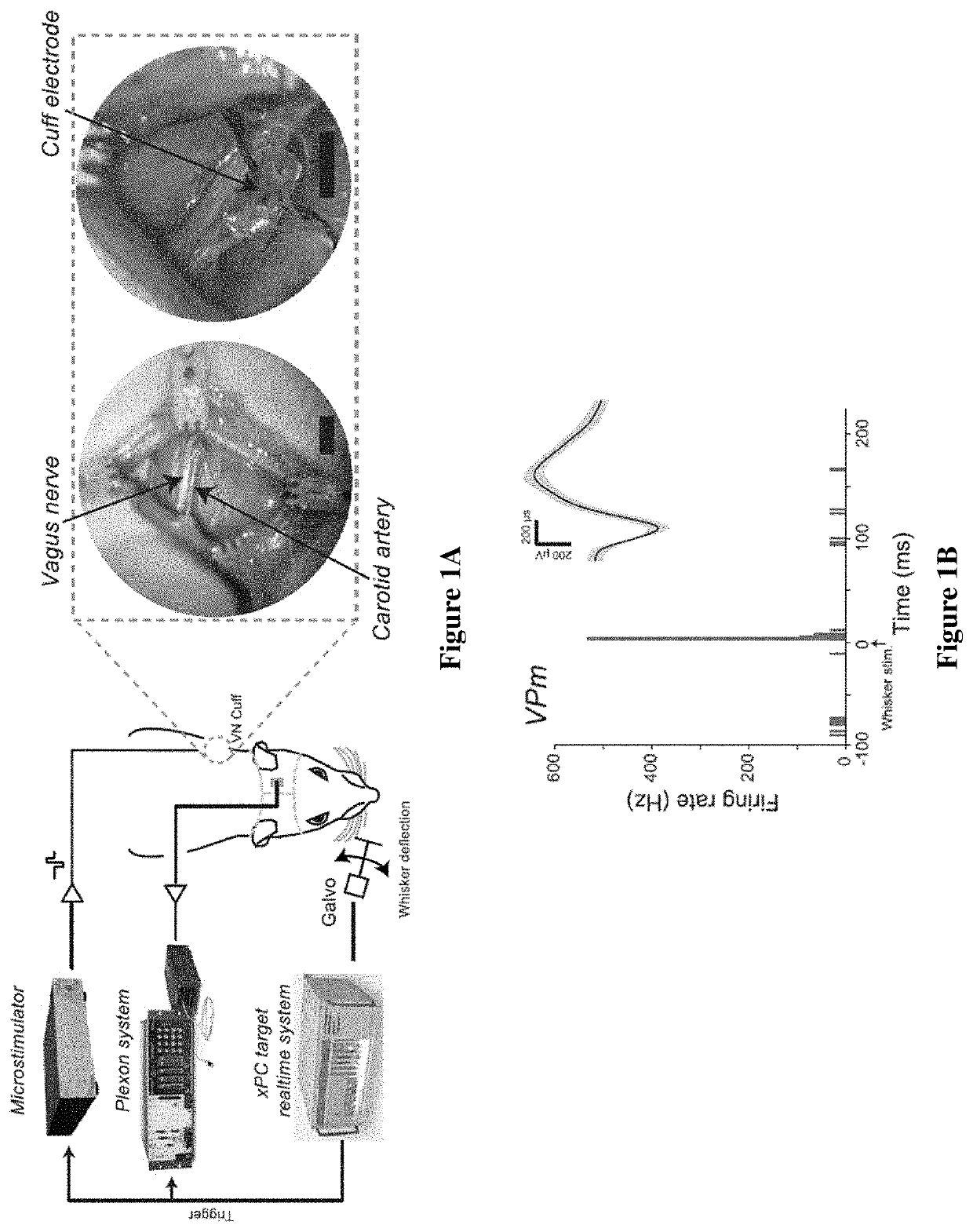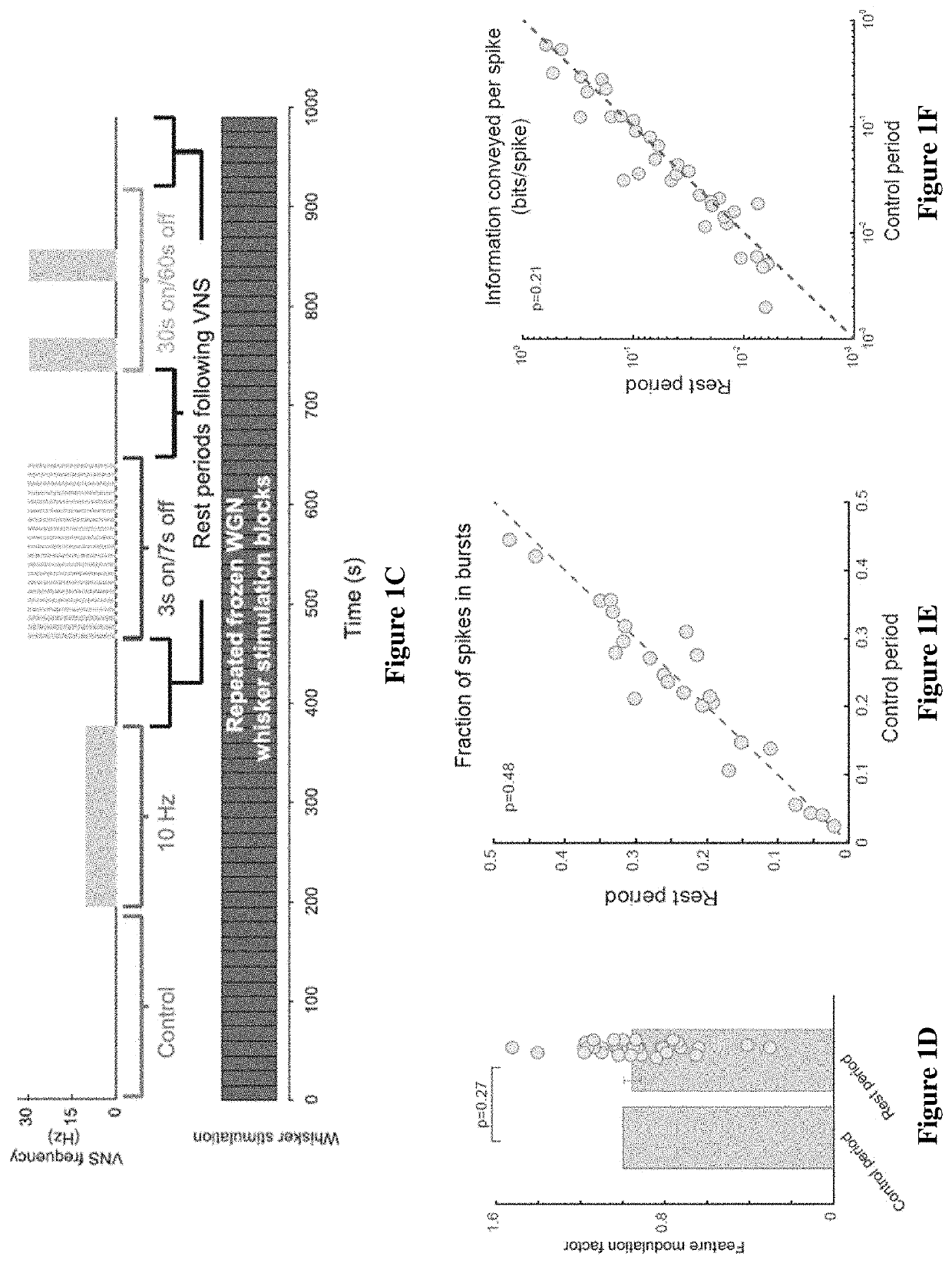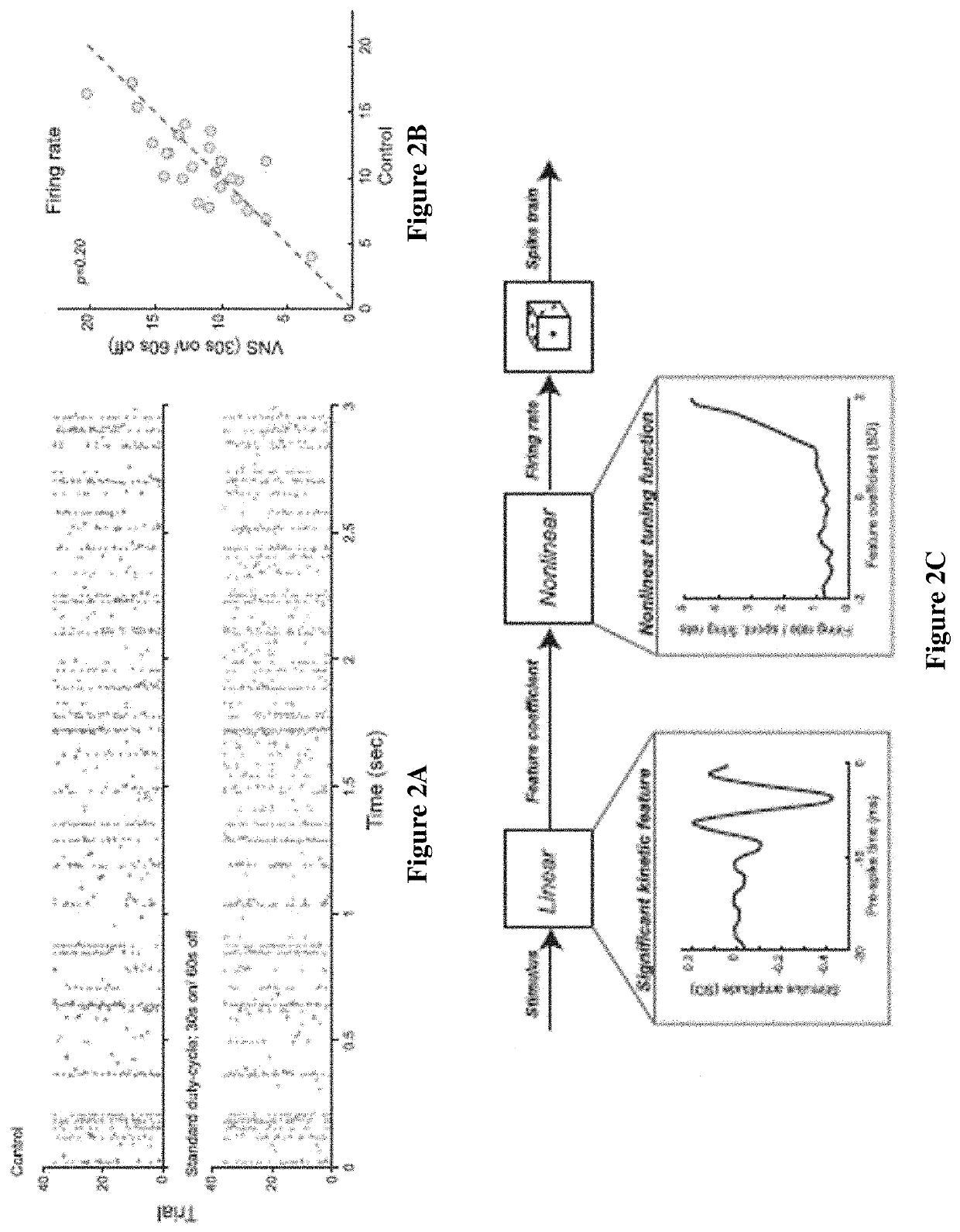Methods and Devices for Improving Sensory Perception by Tonic Vagus Nerve Stimulation
a technology sensory processing, which is applied in the field of tonic vagus nerve stimulation, can solve the problems of degrading the accuracy of the resulting perception, imperfect processing of sensory information, and all too common sensory loss, and achieves rapid improvement of sensory processing, and transient effects of vns. , the effect of short timescal
- Summary
- Abstract
- Description
- Claims
- Application Information
AI Technical Summary
Benefits of technology
Problems solved by technology
Method used
Image
Examples
example 1
[0239]To understand the extent to which VNS modulates thalamic sensory processing, single-unit activity was recorded from the VPm (ventral posteromedial nucleus) of the rat vibrissa pathway in response to repeated WGN whisker deflection while VNS stimulation patterns were systematically varied (FIG. 1A). The VPm is a relay nucleus in the thalamus that gates somatosensory information to cortex47,48. VPm neurons reliably respond to stimulation of the neuron's corresponding principle whisker49, 50 (FIG. 1B). Four different VNS patterns were tested: no stimulation (as a control), standard duty-cycle (30 Hz, 30 s on / 60 s off duty-cycle), continuous tonic (10 Hz), and fast duty-cycle (30 Hz, 3 s on / 7 s off duty-cycle) (FIG. 1C). Each VNS pattern lasted 180 s, during which 12 repetitions of the frozen 15 s WGN whisker stimulation were delivered, with a at least 75 s of rest period between them.
VNS Modulation of Sensory Processing is Transient
[0240]To ensure the system had ample time to res...
example 2
Standard Duty-Cycle VNS Improved Thalamic Feature Selectivity and Information Transmission
[0242]To estimate the feature selectivity of VPm neurons and the effects of VNS on thalamic sensory processing, the response of VPm neurons to the same frozen white Gaussian noise (WGN) whisker stimulation with and without VNS was compared. The striations clearly visible in the raster plots of recorded VPm spiking activity in response to repeated presentations of the same WGN stimulation indicated that the neurons were sensitive to certain kinetic features in the stimulus, as the cells reliably fired at certain time points during each presentation (FIG. 2A).
[0243]Standard duty-cycle VNS (i.e. 30 Hz, 30 s on / 60 s off) did not change the firing rate of the thalamic relay neurons (FIG. 2B; 11.0±0.6 Hz during control periods vs 11.5±0.7 Hz during standard duty-cycle VNS, 25 neurons, 6 rats, p=0.20, paired t-test; Mean±SEM reported for all results unless otherwise stated). Spike triggered covariance...
example 3
[0247]The short timescale of VNS effects on thalamic sensory processing caused standard duty-cycle patterns of VNS to induce a fluctuating thalamic sensory processing state
[0248]A typical therapeutically employed VNS stimulation pattern traditionally uses a relatively slow duty-cycle (e.g. 30 s on / 60 s off). The off period of the standard VNS pattern used described herein (60 s) is longer than the period it takes for the effects of VNS on sensory processing to dissipate (-45 s). Although relatively slow duty-cycled patterns have proved to efficiently mitigate symptoms in neurological disorders, it was unclear how switching VNS on and off would modulate thalamic state given that the effects of VNS on VPm sensory processing occur and dissipate on such short timescales.
[0249]To test this, the responses of VPm neurons during the on period of VNS were compared to the same neurons' responses during the first 30 s and second 30 s of the off period. Interestingly, the effect of VNS on thala...
PUM
 Login to View More
Login to View More Abstract
Description
Claims
Application Information
 Login to View More
Login to View More - R&D
- Intellectual Property
- Life Sciences
- Materials
- Tech Scout
- Unparalleled Data Quality
- Higher Quality Content
- 60% Fewer Hallucinations
Browse by: Latest US Patents, China's latest patents, Technical Efficacy Thesaurus, Application Domain, Technology Topic, Popular Technical Reports.
© 2025 PatSnap. All rights reserved.Legal|Privacy policy|Modern Slavery Act Transparency Statement|Sitemap|About US| Contact US: help@patsnap.com



